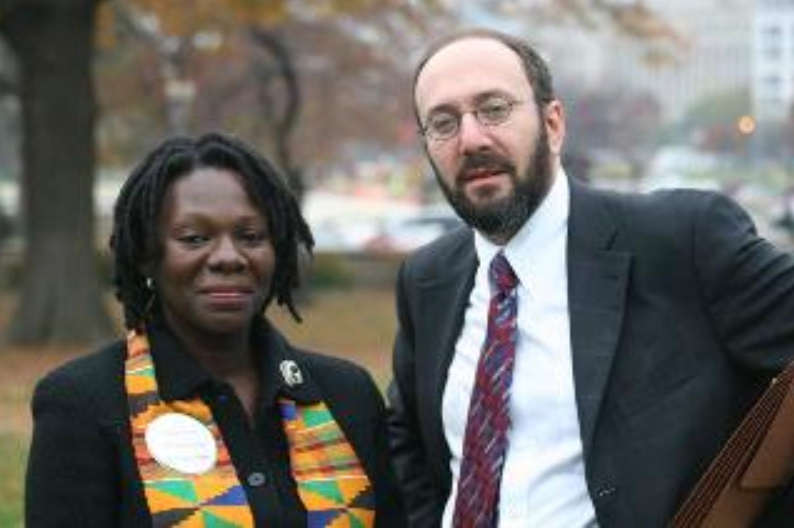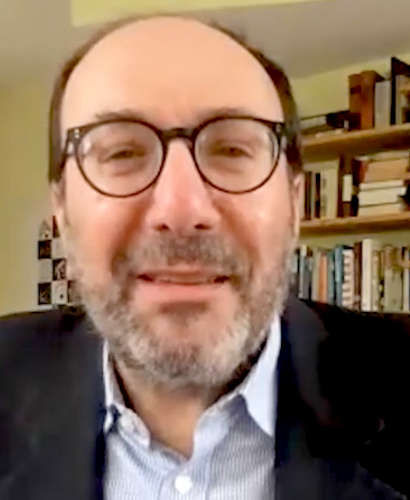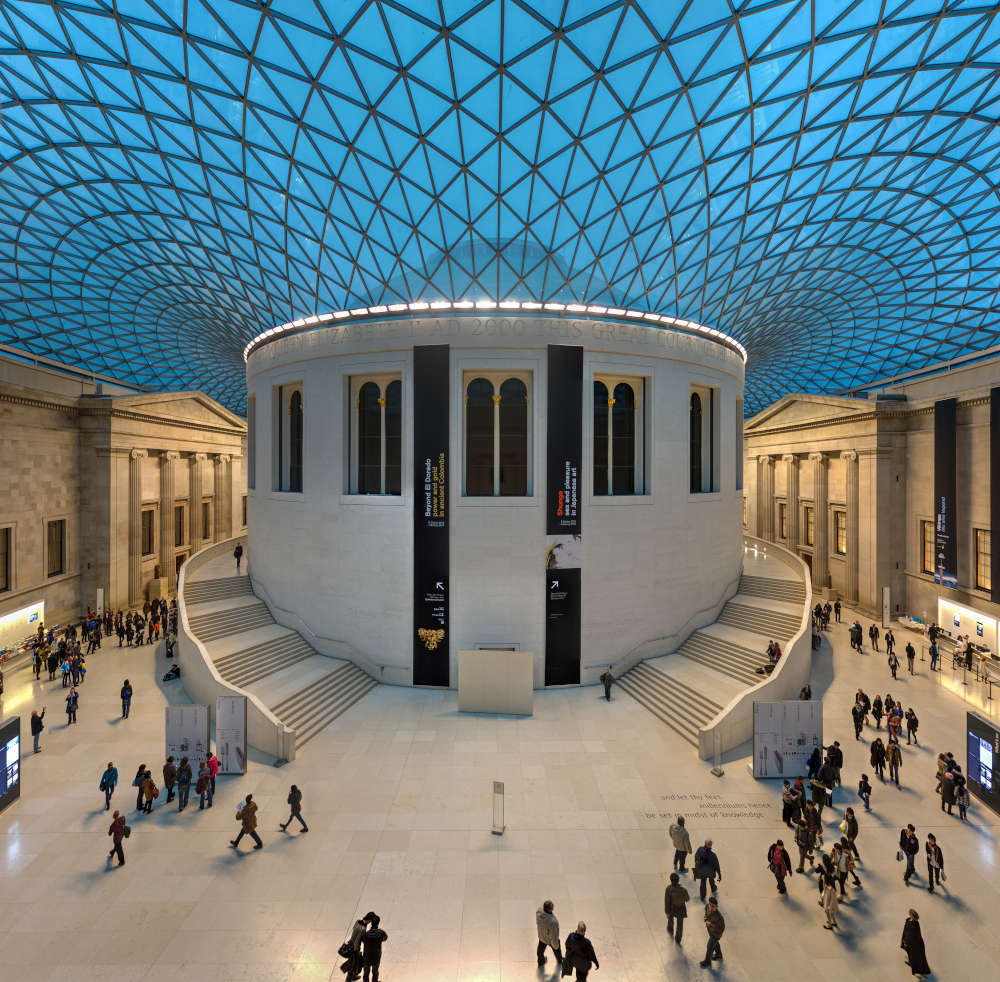Benin Bronzes Lawsuit Against Smithsonian
by Cultural Property News
For 300 years, human beings were traded in exchange for copper manillas that were melted down to make the world-famous Benin bronzes. The Restitution Study Group, a non-profit dedicated to securing justice for the transatlantic enslavement of African people, is filing an appeal in its lawsuit against the Smithsonian Institution in the D.C. courts, arguing for the rights of descendants of slaves trafficked by the Benin Kingdom to have access to the bronzes where they live, and to have their true story told.
This is a transcript of an interview by moderator Kate Fitz Gibbon with Restitution Study Group founder and director Deadria Farmer-Paellmann and noted civil rights and constitutional law attorney Bruce Afran on June 29, 2023 for the American Bar Association, International Law Section, Art and Cultural Heritage Law Committee, “Benin Bronzes to Nigeria? The Restitution Study Group sues to stop the return.“
Moderator: Welcome to Deadria Farmer-Paellmann and to Bruce Afran. We’ll be hearing from them and I’ll be learning along with listeners about the past activities of the Restitution Study Group or RSG. The group was founded by Deadria in New York. It has taken part in important litigation and in social movements regarding not just repatriation of objects but focused on the descendants of slaves that came to the United States from Africa and the rights that should be accruing to them.
Bruce Afran is a well-known constitutional law attorney who brings a completely different perspective to the more common cultural property questions on this issue. He has been instrumental in reformulating the Restitution Study Group’s lawsuit against the Smithsonian Institution with respect to the Benin bronzes.
Today, everybody is at least somewhat familiar with the story of the Benin bronzes. This is the term used for all of the treasures of the Palace of the Oba, the ruler in Benin City, that were seized by British troops in a punitive expedition in 1897. There were two key results of this expedition.
First, the destruction of the city and capture of the king ended the slave trade in Benin. Second, the extraordinary artistry displayed in the brass plaques and portrait heads, and carved ivories seized in the raid amazed European audiences. They were recognized as the most sophisticated artworks ever seen from sub-Saharan Africa. They were sold as war booty and eagerly acquired by museums in Europe and later by collectors and museums in the United States.

Smithsonian National Museum of African Art, on the National Mall, Washington, D.C. Photo: Difference engine via Wikimedia Commons / CC BY-SA 4.0.
These bronzes are now objects of controversy. Well over a thousand objects have been either physically returned, or title transferred to the government of Nigeria. There are many reasons for these returns. Some feel that the return is necessary to restore dignity, identity, and a valuable national asset to the Nigerian people. Others that return is necessary to make right a theft from the Nigerian kingdom in 1897. Others simply believe that all objects should belong only to the country where they were made. Recently, the arguments for return were complicated by a decree issued this March by the outgoing President Bukhari of Nigeria that vested full title, control, and management authority over all returned bronzes, not in the Nigerian government or the Nigerian museum system, but in the person of the current Oba, the traditional ruler of Benin City. This raises a major question for all museums engaged in repatriation, including the Smithsonian, which is “to whom are the bronzes going?” Does that alter the kind of ethical and moral balance that has precipitated the returns? When is repatriation really appropriate?
In October of 2022, the Smithsonian Institution’s Museum of African Art in Washington, DC transferred title to 29 Benin bronzes to the Nigerian government’s national museum agency, the NCMM, delivering eight to Nigeria and retaining the others on loan. We are fortunate to have Deadria Farmer-Paellmann and Bruce Afran here today to tell us the story of this controversy and explain their purpose and goals in dealing with the Benin bronzes.
Moderator: Deadria, the RSG was the very first organization to make the argument to museums that descendants of enslaved Africans were stakeholders in the proposed return of Benin bronzes. You showed how the bronzes were a product of slavery and that they’re actually made from manillas, the bracelets that are depicted in the Benin bronze panel behind me. These are the currency that was used to pay for slaves. Can you talk about the slave trade in Benin and the manillas and what they represent?
Deadria Farmer-Paellmann: Sure. I want to thank the art and law division of the American Bar Association for inviting us to share our perspective. My work around the bronzes really started in 1999 when I was a law student at Cardozo, when I did a paper that was basically designed to make an argument for the return of the bronzes. I was in law school specifically to build the case for slavery reparations, and anything related to Africa I felt would ultimately help us in our effort. I did not anticipate learning about the manillas – but I learned then that the manillas were the primary currency for the transatlantic slave trade. In particular, the Benin Kingdom required that slave traders pay in manillas for people. That started in the 16th century when the northern trade route for the metal, the bronze or copper that they needed to make brass sculptures, shut down. These manillas had a value per person. Fifty would buy a woman. Fifty-seven would buy a male. This is what the Benin Kingdom received in exchange for humans for 300 years.
These manillas were supplied by Germany. They were mined mostly in Germany for 300 years. Some other European nations mined them as well. Bottom line though is that the Benin Kingdom profited from enslavement of people for 300 years and they melted the manillas they received in exchange to make the bronzes.
We began our efforts basically to educate folks about this part of the narrative that had been excluded. We began in 2022 with our efforts to educate people about the history of the Benin bronzes when we heard that the Smithsonian would be returning 39 bronzes. We reached out to Ngaire Blankenburg. [Ed. note: Blankenberg was Director of the Smithsonian Institution’s Museum of African Art at the time.]
We requested that we be included in the discussion. When I say we, I mean descendants of enslaved Africans who can trace themselves using DNA back to the Benin Kingdom and to Nigeria and the slave trade there, which was largely controlled by the Benin Kingdom for 300 years. We all are DNA descendants. We connect ourselves through DNA tests. For those who cannot do that, DNA research has verified that 93% of descendants of enslaved Africans in the United States have DNA from Nigeria. 82% of Caribbeans have this DNA. Right now, it’s not clear what the number is from Brazil. The research that was reported in the New York Times coming from 23andMe says that they’re not sure that they see the DNA in Brazil. However, we know Brazilian people who have as much DNA as we have from Nigeria. I am 27% Nigerian and one of our representatives, the person who mobilizes for the DNA descendants from Brazil, has 26%. We have someone who is part of our mobilizing team from the United Kingdom, whose family was enslaved in the Caribbean. She represents the Caribbean. We are a team of people working together to ensure that the narrative about the Benin bronzes is changed.
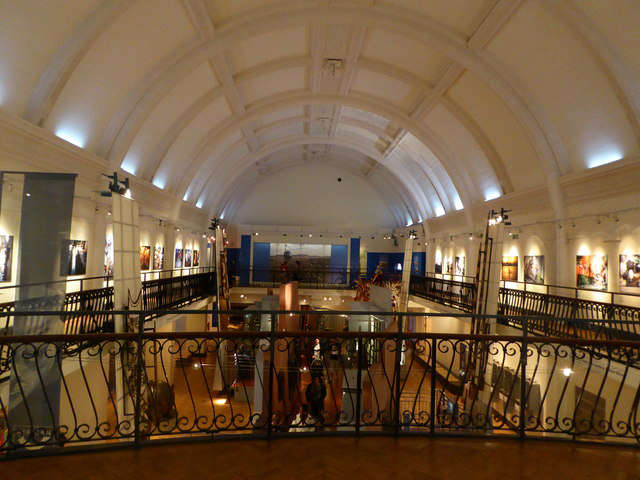
Interior, global display, Horniman Museum and Gardens. Photo: Horniman Museum via Wikimedia Commons / CC BY-SA 2.0.
Right now, I’m in Europe because we have found that in most museums there is no mention of the slave trade origin of the bronzes. One of the few places that we see any mention – and it’s not enough – is at the University of Pennsylvania, which holds the second largest collection of bronzes in the United States. They have 188 of them. We’ve been in communication with the curator there to discuss how can we all work together to ensure that the right thing happens with the bronzes. We find that their presentation of the bronzes is exemplary. They at least mention the slave trade. But in Europe, we’ve been to the Horniman Museum, we’ve been to the British Museum and to Oxford. There is no mention of the slave trade origin of the bronzes. It’s quite shocking to see that.
Moderator: Are you saying this is really about the right of the public to know as much of the truth as possible and less about ownership?
Deadria Farmer-Paellmann: It’s about both. One part of it is that many DNA descendants have no clue about that history. Many African Americans have been persuaded to support the repatriation of relics without being informed of the fact that their ancestors were enslaved there. Of course, we suffer from ethnocide. We don’t know our African ancestry or our ethnic groups. We are disconnected from our family in Africa. African Americans don’t know that part of the story.
We feel that that’s something that the public in general ought to be aware of. By the end of this conversation, a lot of folks may learn more about this than they knew before. Part of this is because you don’t get this information in museums when you go to see the bronzes. In the United States it’s very rarely mentioned that the bronzes were made by enslaving us for 300 years. That narrative has to be changed.
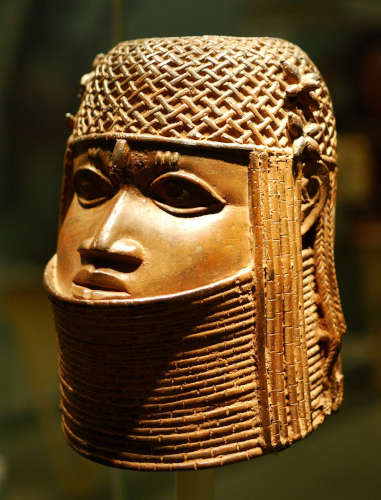
Commemorative Head, Benin, Nigeria now in Bristol Museum. Photo: Matt Neale via Wikimedia Commons / CC BY-SA 2.0.
The other side of this is that we are demanding co-ownership. We have hired counsel in the UK who has been engaged in the outreach around the world to give official notice of our claim. At this point I think probably 107 notices have been sent around between Germany, the United Kingdom, and the United States, letting the institutions know that we are here and that we are claiming our share of the bronzes on a moral basis – but there are also legal arguments involved.
The lawsuit against the Smithsonian has a different basis and Bruce is going to explain what that is about but ultimately what we want is an opportunity to sit down with the Benin Kingdom – that means the Oba as well as the Nigerian government – to ensure that we all agree on where these bronzes go and that we ensure access by the DNA descendants where we live as a result of having been enslaved and deposited all around the globe.
We want access. Our children need to know. These bronzes are the embodiment of our enslaved ancestors. As I said, 50 manillas used to make the bronzes were paid per woman and 57 per man. It’s us and we should be included in anything that happens.
Moderator: It’s clear that your group’s work and the messages that you have sent to these European institutions are having an effect. There are currently some serious discussions taking place in the German parliament regarding the return of the bronzes. I take it that you have multiple goals but one you are pursuing personally is a dialogue and another is the legal aspect of this with the Smithsonian, which is not just about repatriating the bronzes but also to provide some ethical and moral guidance to all U.S. museums on the issues.
Moderator: Bruce can you take us briefly through the original injunction that the Restitution Study Group sought against the transfer of the bronzes? I understand the judge denied the preliminary injunction that the group sought, and that initially the Restitution Study Group filed an appeal, but then withdrew it, and you are now working on another approach?
Bruce Afran: I’m glad to have this opportunity. First of all, let me stress that another law firm initiated the case and I came in toward the end of that process more as a consultant. Judge Cooper did deny standing. The judge said there’s not a close enough factual nexus between Deadria and the Restitution Study Group and the question of the origin of the Benin bronzes to allow them to be plaintiffs. The judge also ruled, and this is legally much more controversial, that there’s no power to block the Smithsonian’s decisions; the Smithsonian is not subject to the Administrative Procedure Act and has a unilateral power to remove its collection to a foreign state.
Now this is rather incredible – to think that the Smithsonian, which is a trustee of the collection of art and science material of the U.S. government has unilateral power to simply remove that and transfer it to the custody of a foreign sovereign. That’s precisely what’s happened here. This is one of the legal issues. Does the Smithsonian have this unilateral power?
Imagine if the Smithsonian decided it would transfer all of the Auschwitz artifacts from the Holocaust Museum back to Poland. There would be an outcry about that assertion of power by the Smithsonian. The same doctrine has to apply here. Yes, the Smithsonian acquired these. Yes, they were taken by Britain under circumstances that many people would question, but does that eliminate the right of slave descendants to have them here and does it allow the Smithsonian to simply remove them – does it allow the Smithsonian to establish its own foreign policy?
There are two really countervailing issues here. We’re amending the complaint to demonstrate Deadria’s long factual connection with the bronzes and with other restitution and reparations issues on behalf of slave descendants. We think this will satisfy general federal standing rules to establish a nexus.
Yes, co-ownership is sought by means of a trust. But in general, there’s a principle that Americans with an interest and close connection to a subject have a right to challenge agency action. The notion that slave descendants alone do not have such standing really is questionable. Deadria has devoted a large part of her life to a study of these bronzes and has made the point that they’re the product of the very currency for which the Benin princes sold Africans to western slave traders – many of whom ended up at times here.
There are 40 million African Americans, nearly all of whom have a slave descendant background. These manillas were the currency used for the sale of their ancestors. The slave condition of Americans derives directly from the creation of these bronzes, which were created from the currency they were sold for.
We say there is a deep need for Americans, particularly African Americans and slave descendants specifically, to have access to these in this country. It is as much part of their history, their culture, their ethnography as it is for people in Nigeria and the old Benin region.
In many ways, the African American slave descendants have a stronger legal claim than the Nigerian government because their ancestors were sold for the very material of which the bronzes were made. In the picture behind you, the horseshoe like designs are actually manillas. They were not only melted to create the bronzes but many of the manillas were actually incorporated into the sculptures themselves.
These represent literally the blood of Africans sold to America in the same way that the uniforms taken from Auschwitz represent the blood of those who died in the Holocaust.
Those descendants must have a factual nexus sufficient to support standing. That’s the first legal issue and the second is does the Smithsonian have the right to unilaterally declare its own foreign policy and simply repatriate?
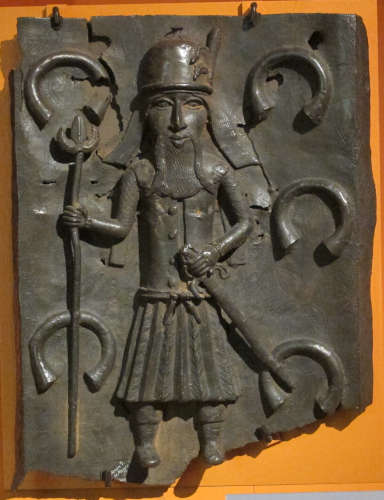
Benin plaque depicting a Portuguese soldier with a background of manillas, copper bracelets used in the slave trade. 16-17th C. Photo: Sailko via Wikimedia Commons / CC BY-SA 3.0.
I want to point that Deadria has changed the dialogue. Repatriation of art objects has almost been a religious quest. It’s almost never questioned. It’s sort of like, if one questions climate change one is seen to be closing their eyes to reality. In the art world, repatriation is seen on the same level – that it’s a natural outgrowth of our modern views. We must repatriate. But in this instance, Deadria has changed the dialogue. She’s made the point internationally that – “No, wait a moment. Let’s put the brakes on for a minute. These art objects in particular relate directly to the slave descendants. They have a direct ethnographic connection to these objects that’s just as strong as of the descendants in Nigeria and perhaps stronger today.”
This has changed the dialogue about repatriation. We’re pointing out that repatriation is not always a proper thing. It will actually deprive people in other countries of what they have a deep connection to.
So, we have these two countervailing issues. Does the Smithsonian have the unilateral legal power to do this when it’s a trustee of the U.S. collection or does Congress have to authorize it? Then, is it really not enough to be a slave descendant to assert an interest in this issue?
One would think that’s enough. Those are the two legal questions.
We took this up on appeal but then we withdrew the appeal because we realized we wanted to establish Deadria and RSG’s factual connection in a broader way. The original attorneys did a good job but we learned that we need a greater factual showing. We’re doing that now and the case is being amended. We will go back to Judge Cooper in D.C. and it will proceed further.
I want to point out that the curator who engineered this return has left the Smithsonian and there seems to be a change both within the agency and internationally about the attitude to repatriation. This has become a major issue in the art world. It does not mean we challenge repatriation as a doctrine. Obviously repatriation is important. There has been theft of too much. But in this instance what was taken has now acquired new meaning to people in other countries particularly American slave descendants. This is a different way of looking at the question of repatriation legally.
Moderator: Could you answer a question for me before we open this up to other participants? Does the fact that the Nigerian government has transferred ownership and title and control of any returned bronzes to the Oba have an impact on your case and your thinking about this issue?
Bruce Afran: That’s a critical question. One of the major bases the government argued to interfere with our request for the injunction was that, well the slave descendants can travel to Nigeria to see them. They’ll be in a museum there.
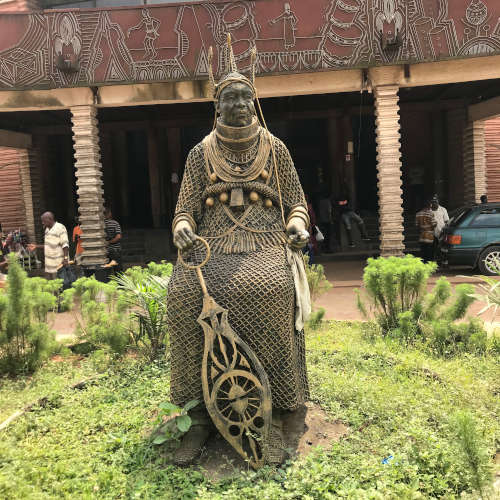
Statue of His Royal Imperial Majesty, The late Oba Akenzua II of Benin Kingdom, opposite the Oba’s Palace in Benin, Edo State, Nigeria. Photo: Ybaremu via Wikimedia Commons / CC BY-SA 4.0.
Number one, that’s a $10,000 trip as opposed to driving down I-95 to Washington from New York. Secondly, simultaneously with this case, the US government had declared Nigeria a travel zone that Americans should not go to because of the danger of kidnappings of Americans. In one breath, the government said – they can just fly to Nigeria and see them your Honor – and Judge Cooper agreed – not disclosing that the government had simultaneously recommended against travel by Americans to Nigeria.
Later we learned that Nigeria had broken its word to the Smithsonian and to the court. It had transferred legal custody to the Oba. They’re no longer in the Nigerian ministry and now in the legal custody of a private person, the Oba. The Oba does not have to display them. The Oba can sell them. The Oba can transfer them. The Oba could melt them down. The Oba has absolute fee simple ownership.
This is directly contrary to the basis on which Judge Cooper denied the injunction. We think this changes the legal dialogue radically.
Deadria Farmer-Paellmann: Can I just add – this also creates a second opportunity for the Benin Kingdom to profit off of the transatlantic slave trade – their role in the transatlantic slave trade.
Audience question: Is there any controversy or doubt as to whether the bronzes entirely come from the manillas? Could it be argued that there might have been another source or is that an incontrovertible historical truth?
Deadria Farmer-Paellmann: What we know historically is that for the 16th to 19th century bronzes, the metal is all coming from manillas. We are not making a claim to the bronzes prior to when they had access to the metal from the northern trading. We’re claiming the ones from the later slave trade that are not from the 12th to the 15th century. Germany’s mining museum recently did a study and verified that the bronzes from the 16th century were made with metal from the slave trade. Some of this research had already been done by P. T. Craddock. [See below.]
We actually gave notice to Germany when we made a claim to their municipalities in August of 2022 that the bronzes had been made from German copper.
Audience question: Were those reports adduced as evidence or is anybody is anybody contesting that fact?
Bruce Afran: That was raised in the factual nexus between slave descendants and the issue before the court. The judge essentially did not address that because the judge’s position was it doesn’t matter because slave descendants don’t have a close enough factual nexus. The judge essentially did not rule on it, although that evidence was presented.
Audience question: Do you anticipate any difficulties on that point? Isn’t it rather crucial to your group’s position?
Deadria Farmer-Paellman: Let me just say that earlier on the Smithsonian was denying that connection. I believe that’s a reason why the Director [Ngaire Blankenberg] is no longer there. Look at the Smithsonian’s press release from the celebrations around the transfer in October. They distanced themselves from the transatlantic slave trade and these bronzes. That was the big contention initially, that the Smithsonian was denying a connection between the bronzes and slavery.
Audience question: But you’ve got evidence to the contrary.
Deadria Farmer-Paellman: An abundance of evidence now.
Bruce Afran: There’s evidence right on the screen. The horseshoe shaped items are manilas. The manillas are actually seen in many of the bronzes. The Smithsonian magazine also issued a report confirming the use of the manillas in the slave trade and the bronzes so it doesn’t seem to be reasonably in dispute.

Brass plaque from the Kingdom of Benin, 16th-17th century, exhibited in the Ethnological Museum, Berlin, Germany. Photo: Daderot via Wikimedia Commons / CC0.
Audience question: Just a general question about what’s happening in Germany. I know they had planned to return the bronzes to the Nigerian government in hopes that there would be this museum [EMOWAA, The Edo Museum of West African Art] that was going to be funded internationally and where the bronzes would be displayed. Now that appears to be off the table. Has Germany rethought what they’re doing in any sense or is it that already too late?
Deadria Farmer-Paellman: We know Saxony seems to be backing off their agreement to return but nothing is certain. The leaders of the repatriation effort appear to be sticking with the decision to transfer without any conditions, so the Oba can do whatever it is that he wishes to do. We have been contacted by some legislators there with an interest in changing the direction of this this decision.
Moderator: There has also been discussion in Germany of revelations from the Benin Online Database. It shows the history of recent ownership of the Benin bronzes and where they are located all over the world. A German scholar and academic [Brigitta Hauser-Schäublin] who analyzed the Benin database information pointed out that there were hundreds of items that were missing from Lagos museums that had been accounted for in the 1950s but were no longer there, including the majority of the pieces that were returned by the British Museum to Nigeria in the 1950s. This raises some additional security questions, but the perspective of the German cultural ministry has been that they set no conditions whatsoever for the return when it was initially established and that that’s what their position is going to continue to be. In Germany, different regions have their own cultural ministries and so we’ll have to see how this plays out.
Audience question: Would Deadria know if there are any slave descendants whose families originated in Nigeria in Germany?
Deadria Farmer-Paellman: My husband is German and my daughter is American and German. There are many others. We have a representative who we call a mobilizer who organizes around the bronzes in Germany. She is originally Brazilian. The Benin Kingdom started the trade with the Portuguese. That ended in 1888 not long before the punitive expedition. There are German DNA descendants of Nigeria from the Benin Kingdom captives.
Audience question: That’s important for standing and just to put a face to the issue.
ABA Section Host: I think it gives food for thought – particularly for me in France because it is a topic that is very much discussed at present. We will follow what you are doing next. What is your schedule if you can share it with us?
Bruce Afran: I can give you a general outline. We are amending the complaint now, adding factual information about Deadria’s connection to the subject that was not included in the first complaint. We believe that will be enough for the judge to say that Deadria has the factual nexus for federal standing in the U.S. For those who are not American lawyers, in the U.S. federal courts you need a very close factual connection. In U.S. state courts you don’t need that connection in the same specific way. This is a real problem in federal litigation in the U.S. – you need to show close factual nexus and so we’re amending it to include that information and we believe that will work. We’re also amending the complaint to hold that the Smithsonian acted illegally in unilaterally transferring the bronzes because they simply acted with their own board but didn’t hold public hearings as is normal for a federal agency. We’re amending the complaint to include both the additional facts and the illegality of the Smithsonian’s decision making. That should be done within the next two weeks – we’re in the middle of it right now.
Thank you to Deadria Farmer-Paellmann and to Bruce Afran for speaking about your work. Many thanks to Anne-Sophie Nardon, Betina Schlossberg, and Joy S. Naifeh of the Art and Cultural Heritage Law Committee for organizing the program!








